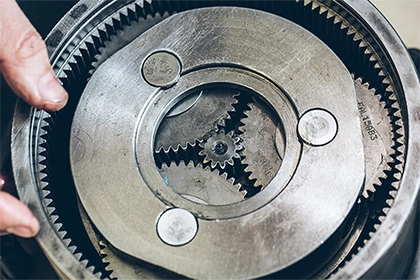
How to change direction of single phase ac motor?
To start, alternating current (AC) motors are electric motors that create torque and spin a shaft by using alternating current (AC). They're commonly employed in anything from modest domestic gadgets to massive industrial gear.
To begin, AC motors are electric motors that use alternating current (AC) to generate torque and rotate a shaft. They are widely used in a variety of applications, from small household appliances to large industrial machinery.
One type of AC motor is the single-phase AC motor, which uses a single-phase power supply to generate torque. Single-phase AC motors are commonly used in applications such as fans, pumps, and blowers.
Sometimes, it is necessary to change the direction of a single-phase AC motor, either to change the direction of rotation or to reverse the direction of a load. There are several ways to do this, including:
Reversing the connections of the motor's stator winding: The most basic way to change the direction of a single-phase AC motor is to reverse the connections of the motor's stator winding. This is done by swapping the connections of two of the stator leads, typically the start and run leads. However, this method only works for certain types of single-phase AC motors, and it can cause the motor to operate at a lower efficiency.
Using a reversing switch or contactor: Another way to change the direction of a single-phase AC motor is to use a reversing switch or contactor. This method involves installing a switch or contactor in the circuit that controls the motor, which allows the direction of the motor to be changed by simply flipping the switch. This method is more versatile than reversing the stator winding, but it requires additional equipment and wiring.
Using a phase converter: A third way to change the direction of a single-phase AC motor is to use a phase converter. A phase converter is a device that converts single-phase power into three-phase power, which can then be used to drive a three-phase AC motor. This method allows the direction of the motor to be changed by simply reversing any two of the three stator leads. However, this method requires the use of a phase converter, which can be expensive and complex to install.
When changing the direction of a single-phase AC motor, there are several factors to consider, including:
Motor type: Not all single-phase AC motors can be easily reversed. Permanent split-capacitor (PSC) motors, for example, are not easily reversible, as they have a capacitor in the circuit that cannot be easily disconnected.
Load type: The type of load that the motor is driving can also affect the feasibility of reversing the motor's direction. For example, if the load is a belt-driven system, reversing the motor's direction may cause the belt to slip or even break.
Motor efficiency: Reversing the direction of a single-phase AC motor can affect its efficiency. For example, reversing the stator winding can cause the motor to operate at a lower efficiency, as the winding is not optimized for the new direction of rotation.
In conclusion,changing the direction of a single-phase AC motor can be necessary in some applications, such as reversing the direction of a load. There are several ways to do this, including reversing the connections of the motor's stator winding, using a reversing switch or contactor, or using a phase converter. However, it is important to consider the type of motor, the type of load, and the potential impact on motor efficiency when changing the direction of a single-phase AC motor.



Leave a Comment